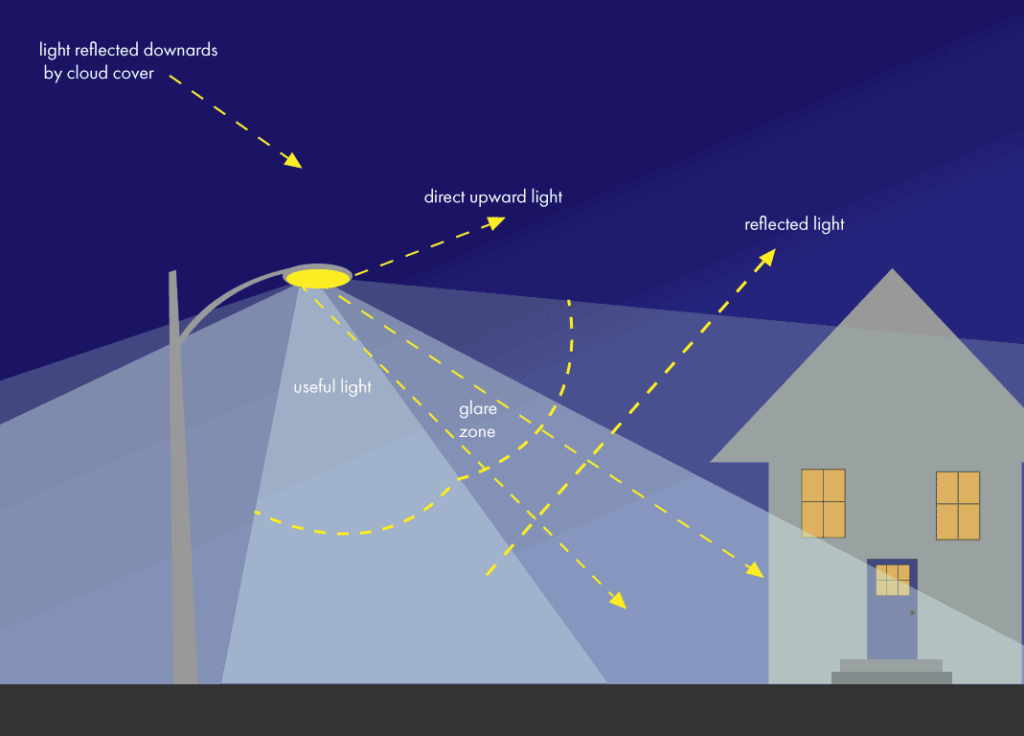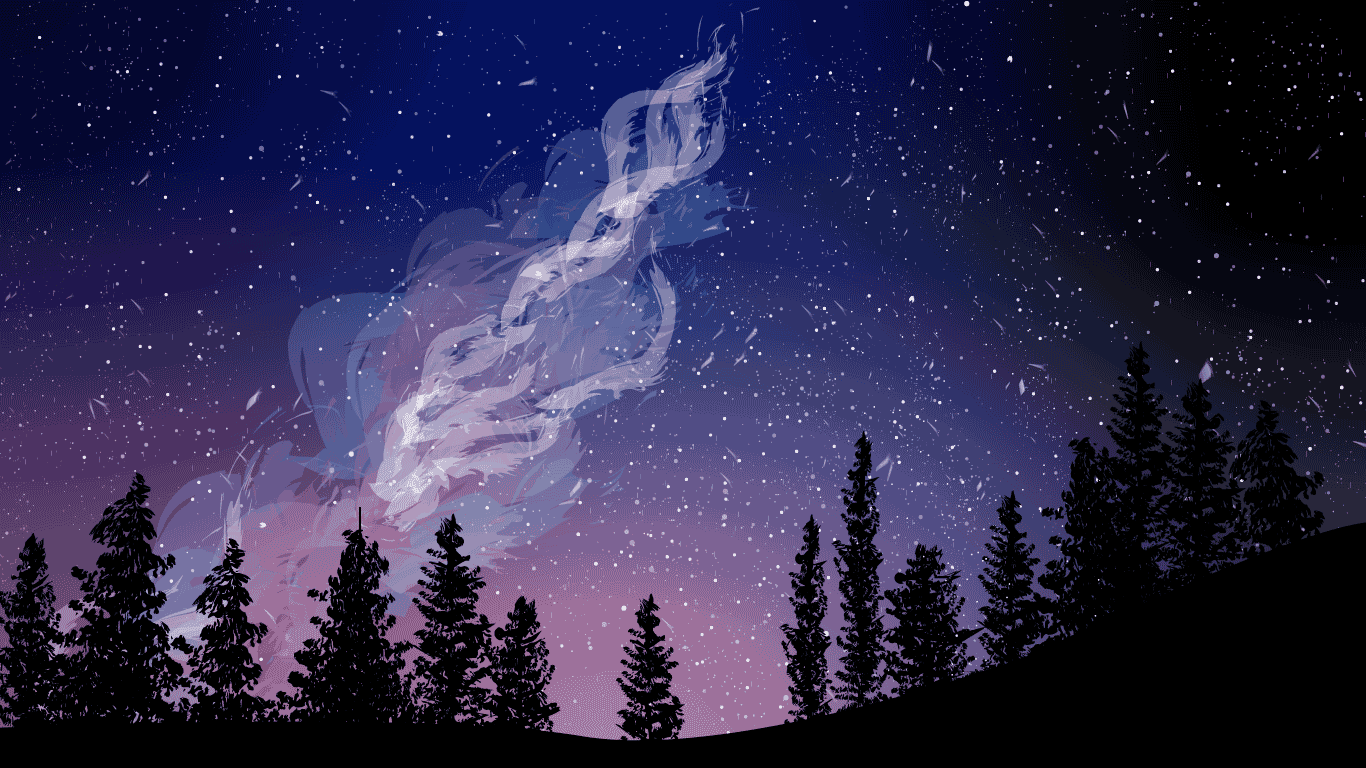Stargazing spots are becoming harder and harder to find. Here are four places in the Midwest to see the stars.
In an area known for its agriculture, livestock, and “flyover state” status, the Midwest would seem like the ideal place to stargaze. After all, if you can find a vantage point higher than the height of a corn stalk, there’s not much to obstruct your view. However, due to a massive light pollution problem, there are only a few places left in the U.S. that offer prime stargazing opportunities.
Light pollution, according to the International Dark Sky Association, is when there is an excessive use of artificial light in the night sky. In major cities, light pollution is often due to the disproportionate number of street lamps and porch lights in an effort to keep neighborhoods safe. These safety measures unfortunately keep the night sky hidden, and impact ecosystems, energy waste, and our health.
In 2016, ”the new world atlas of artificial night sky brightness” published in the open access journal Science Advances, concluded that 80 percent of the world’s population lives under skyglow–built up brightness in the sky due to light pollution. And that number continues to grow at least 2 percent with each passing year. You might think you have to travel outside the United States or across the country to Colorado or Wyoming to see the most breathtaking stars. Fortunately, that’s not the case.

You can stargaze right here in the Midwest. While still highly impacted by light pollution, many Midwest states contain some of the Eastern-most locations in the U.S. where people can get a good look at the stars. With fewer cities and more farmland, there are quite a few more options for night sky viewing than on either of the coasts. In fact, the Midwest is home to several internationally recognized dark sky parks–locations specifically designated for stargazing and protected from light pollution. Here are some locations in the Midwest where you can find some amazing dark skies.
The Headlands International Dark Sky Park
Mackinaw City, MI | Open year round
Located right along the Lake Michigan shoreline, the Headlands was one of the first internationally recognized dark sky parks in the world, earning its status in 2011. With more than 500 acres of woodland containing rare plants and wildlife, the park offers exploration opportunities even during the daytime. Once it gets dark, hike the trail to the dark sky viewing area to see a stunning view of the night sky and occasionally even the Northern Lights. Plus, the Headlands offers frequent guided stargazing programs in the spring and summer.
White Rock Conservancy
Coon Rapids, IA | Open year round
While White Rock Conservancy isn’t a recognized dark sky park, this nature preserve has one of the darkest skies Iowa has to offer. Located 70 miles from Des Moines, White Rock is a 5,500 acre land trust given to the state of Iowa by the Garst family. The initial purpose of the land trust was to preserve the oak tree savanna habitat that once freely grew in the state of Iowa but has become severely endangered. However, as time passed, the conservancy wanted more to offer the community.
“They wanted a hook to get the community invested in what it looked like to be in the countryside surrounded by nature,” Dan Gudahl, the Executive Director at White Rock Conservancy says.
As of today, the park has a designated “star field” that allows visitors to camp out in an area that restricts artificial light of any kind, from car headlights to generators. Every year, White Rock Conservancy hosts a star party in conjunction with Ames Area Amateur Astronomers to inform the public about the importance of reducing light pollution and to teach them about the night sky.
“It’s amazing to see the rings of Jupiter from a telescope and be able to talk to astronomers and ask questions,” Gudahl says. All from the comfort of Iowa.
Middle Fork River Forest Preserve
Champaign County, IL
On the outskirts of city lights is Middle Fork River Forest Preserve, an international dark sky park as of 2018. The forest preserve is a 1,700 acre site that protects a restored prairie filled with native wildflowers.The preserve also acts as a nighttime refuge for wildlife in Urbana, Champaign and Rantoul, who wish to escape the night glow. In the months leading up to its accreditation, the park upgraded the outdoor lights surrounding the preserve to meet International Dark Sky (IDA) recommendations as well as implemented programs to educate the public about the benefits of nighttime darkness. The park also provides suggestions to the public on how to limit excessive nighttime light in their home environments.
Newport State Park
Ellison Bay, WI | Open 6 a.m. – 11 p.m. (closing hours are flexible if dark sky viewing)
Due to its distance from commercial buildings and its proximity to Lake Michigan, Newport State Park is the perfect place to stargaze. According to the Newport Wilderness Society, numerous trees within the park and the water from the lake reduce atmospheric turbulence, making for a more stable stargazing environment. This limits the effect of stars “twinkling” and makes it easier to view stars through a telescope. The park also has several off-road hiking trails and designated stargazing areas for optimal viewing.
Why do stars twinkle?
When stargazing, you may notice that some stars appear to gleam or visibly brighten and then fade. According to the Infrared Processing Analysis Center, stars do not twinkle–they simply appear to twinkle when viewed from Earth. This is caused by our atmosphere. High winds in our atmosphere, and differing temperatures and air densities between us and the stars cause the light to appear to twinkle when viewed from the ground. The farther a star is from earth, the more it will appear to gleam, as there is more atmosphere between you and it.
At Urban Plains, we seek to produce content that celebrates the Midwestern experience. While our staff come from all over the United States, we’ve each made a home in the rolling plains and friendly cities that make up this unique region of the country. In the coming weeks, we hope to be a place to find peace of mind during this unprecedented time. We will continue to share the stories, videos, podcasts, photos, and other content that we know you have an appetite for. Wishing good health to you all.
– UP Staff


I have read so many posts about the blogger lovers however this post is really a good piece of writing, keep it up